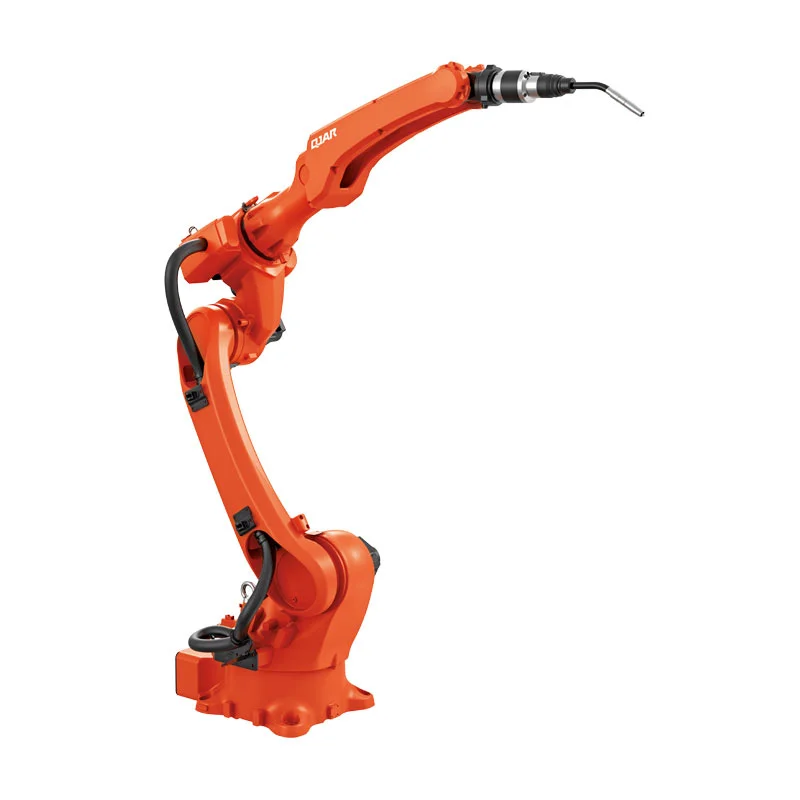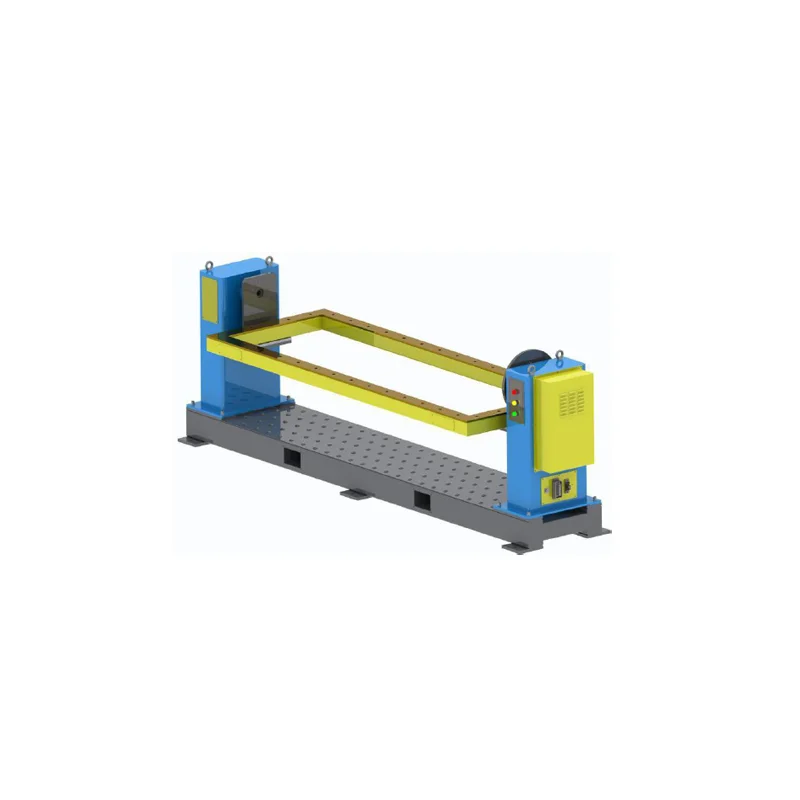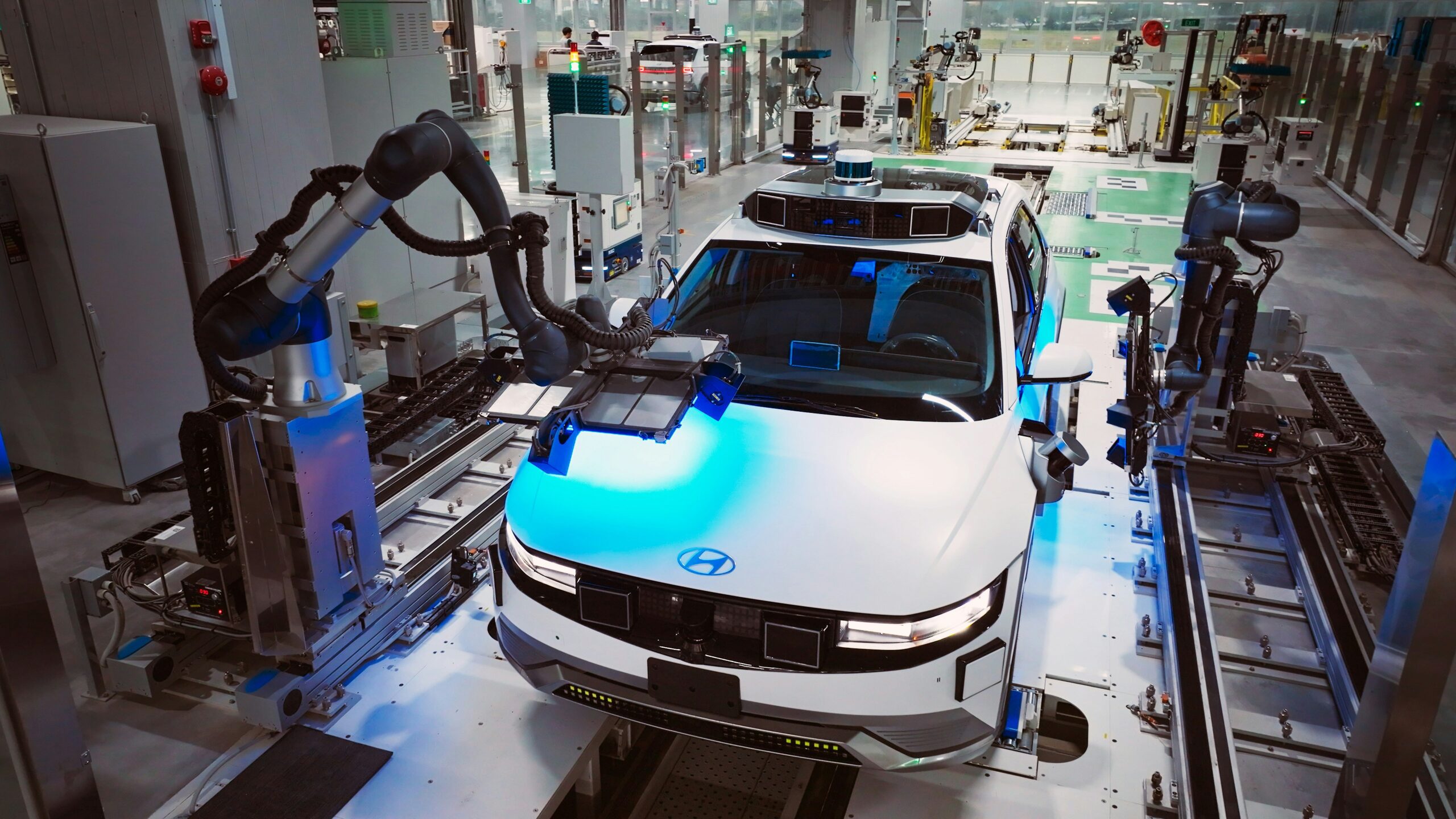Introduction
In the highly competitive manufacturing environment of today, accuracy and efficiency are critical. Automation technologies have led to significant advancements in welding, a critical process in many manufacturing operations. Among these, welding turntables and robots are particularly notable for their capacity to streamline processes from fabrication to assembly. For example, the 6KG Payload, 2014mm Reaching Distance, 6 Axis Welding robot QJR6-2000H has features that improve its performance, like a gear gap adjustment structure and a unique patent for noise reduction. Meanwhile, precise positioning with high-speed capabilities is provided by the Single Axis Welding Positioner EVS-SWP-ZW series, which has models that can handle loads ranging from 500 kg to 1200 kg. This article examines the ways in which these cutting-edge instruments cooperate to enhance productivity, guarantee worker safety, and enhance product quality.
Knowing How to Weld Robots
Robots that automate the welding process, such as the QJR6-2000H, increase consistency and efficiency while lowering the risk of human error and exposure to dangerous situations. With its remarkable 2014mm armspan and ±0.08mm repeat positioning accuracy, this model can operate with remarkable precision. Its U-shaped wrist design and hollow structure increase joint support stiffness, improving flexibility and allowing it to function in confined spaces. Welding robots are essential in industries like aerospace and automotive manufacturing that demand high-precision or high-volume welding because of these features.

The Function of Turntable Welding
The EVS-SWP-ZW series of welding turntables is a stable platform that rotates workpieces into ideal positions for welding, making it an ideal addition to welding robots. Smooth and precise motion is ensured by the AC servo motors and RV precise reducers fitted in these turntables. They are adaptable for a variety of applications due to their rated load capacities and variable speeds, which can reach up to 70°/s. They can handle materials of various sizes and weights. A welding turntable‘s precision is essential because it directly affects the quality of the weld, minimizing flaws and lowering the need for rework.

Combining Turntables and Robots for Enhanced Workflow
Welding robots and welding turntables work together to maximize productivity and quality through a synergistic effect. The turntable precisely positions the workpiece, cutting down on time and complexity, while the robot can handle complicated welding tasks. When multiple welding angles are required, this integration is especially helpful because the turntable can rotate the piece without the robot having to adjust its position. Because both units can be configured to operate simultaneously under the same operating parameters and control inputs, setup is simplified. By coordinating, it is ensured that the workflow runs efficiently and continuously with little interruption.
Case Studies
Case Study 1: Manufacturer of Automotive Parts
A high-volume auto parts manufacturer used an EVS-SWP-ZW-800 welding turntable and a QJR6-2000H welding robot in a real-world application. As a result, production speed increased by 30% and weld quality significantly improved. Because the turntable could spin heavy car parts, the welding robot could easily access different angles, which cut cycle times and improved the strength of the welds.

Case Study 2: Application to the Aerospace Industry
Another example concerned an aerospace business that handled large, intricate assemblies needed for aircraft construction by using the QJR6-2000H in conjunction with the EVS-SWP-ZW-1200 welding turntable. The integrated system’s accuracy and consistency made sure that the welds fulfilled the strict requirements needed for aerospace components, which are essential for guaranteeing performance and safety. Utilizing these cutting-edge technologies not only expedited the production process but also drastically decreased operating expenses and material waste.
Prospective Patterns and Progress
Increased AI and machine learning integration will probably be seen in welding in manufacturing in the future, allowing welding robots and turntables to anticipate and adjust in real time to changes in material properties and environmental conditions. Furthermore, as more sophisticated sensors and control systems are developed, welding operations may become even more precise and adaptable. The significance of autonomous welding technologies is expected to rise in light of manufacturers’ ongoing efforts to reduce expenses and boost productivity.
Conclusion
By introducing to manufacturing processes never-before-seen levels of precision, efficiency, and safety, welding robots and welding turntables are transforming industry workflows. The integration of these technologies enables producers to undertake increasingly challenging tasks, achieve cost reductions, and satisfy expanding quality standards. The integration of these technologies will be critical for organizations aiming to maintain a competitive advantage and guarantee the long-term viability of their activities in a growing market. The manufacturing sector is expected to experience significant growth in the coming years as robotics and automation continue to be in their nascent stages, offering substantial opportunities to improve production processes.
